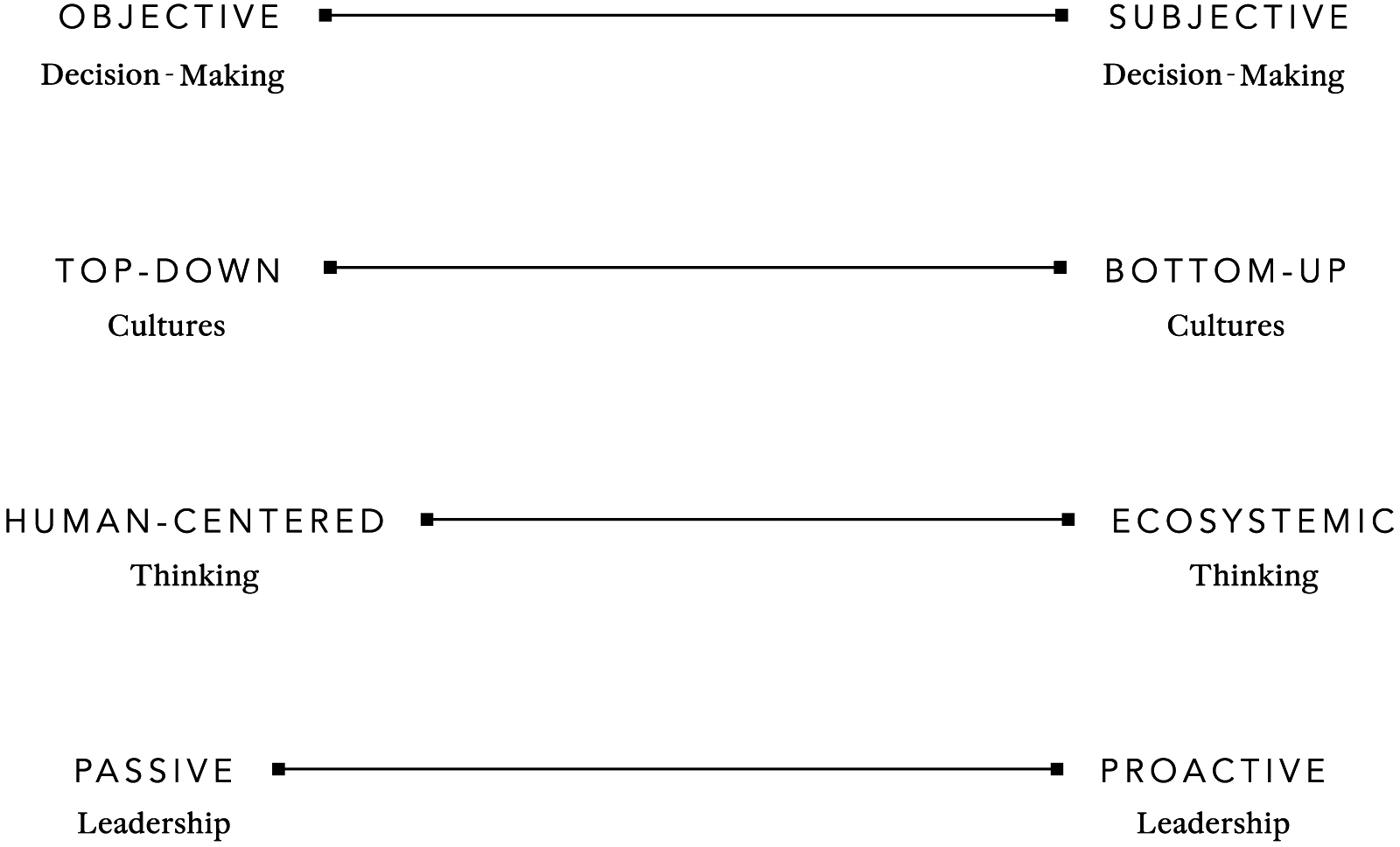
These exercises, in the form of questions to answer, will help you calibrate where your company or organization fits on the spectrum of the four common tensions that arise as we begin to apply empathy in our lives and workplaces.

Objective Versus Subjective Decision-Making
• What is your organization’s comfort with ambiguity?
• How often are facts and data used to inform decisions?
• Is creativity a central part of your company’s DNA?
• How is personal and company-wide success measured?
• How much is experimentation tolerated or encouraged?
Top-Down Versus Bottom-Up Cultures
• Is your company’s culture democratic or dictatorial?
• Do you have existing structures or policies in place to solicit teamwide feedback?
• How clearly is the company’s organizational and reporting structure articulated?
• Do you interact with a relatively narrow or diverse set of employees?
• How quickly are decisions made and put into action?
Human-Centered Versus Ecosystemic Thinking
• How important is the end consumer to your company’s planning?
• Do conversations about industry trends occur regularly?
• Does your company have a clear understanding of its customer(s)?
• Does an awareness of greater societal, economic, or political issues figure into the company’s thought process?
• What is the most important external factor considered when developing your company’s products or services?
Passive Versus Proactive Leadership
• What sort of leadership do you bring to the table with your colleagues? Your department? Your organization?
• How is feedback used as part of personal development at your company?
• When and why do company employees receive communication from senior leadership?
• Does the overall organization consider individual employee growth to be important?
• In your organization, is leadership assigned, earned, or both?
Each of these questions provides only a small window into a company. But evaluated collectively, they will help you uncover the tendencies, deficiencies, and proclivities that have defined the current nature of your business.
Companies seeking to bring more empathy into their culture will need to understand where they stand on the spectrum of these tensions and how that position may accommodate or hinder their ability to include empathic methods.
An acute awareness of these tensions and how to work with them will help make your leadership increasingly more effective.